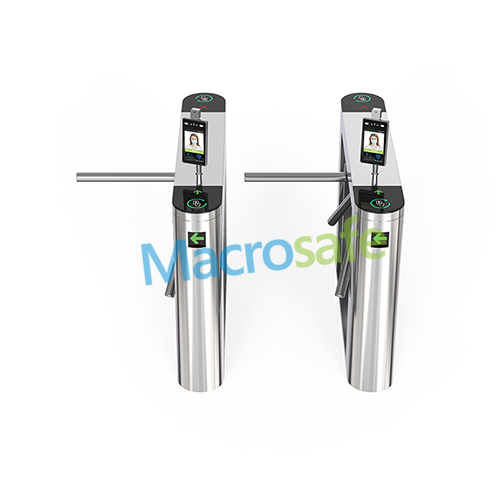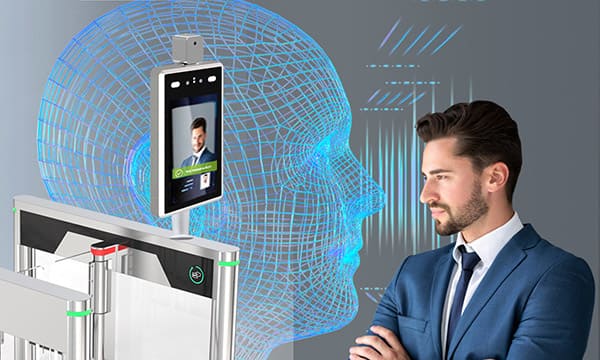
1. What is biometric turnstile?
Biometric turnstiles refer to pedestrian turnstiles barrier gates that integrated biometric technology to further improve the security and management efficiency of designated areas. Common biometric technologies include fingerprints, palmprints, voiceprints, iris, face, gait, veins, DNA recognition, and other technologies.
Among them, fingerprint, face recognition systems, and iris are the most widely used in combination with turnstile gates. Due to its advantages of living body recognition, non-contact recognition, high recognition accuracy, and the ability to quickly and easily verify user information, biometric turnstiles are widely loved by users.
Biometrics is a solution that relies on the physical characteristics of the human body for authentication. The core of the so-called biometrics is how to obtain these biometrics, convert them into digital information, store them in a computer, and use reliable matching algorithms to complete the process of verifying and identifying individuals.
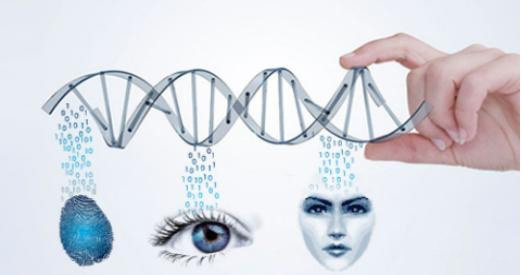 Compared with traditional access control solutions such as keys, passwords, or cards, biometric technology has obvious advantages in terms of accuracy, stability, recognition speed, and convenience, so biometric turnstile is the future of access control industry.
Compared with traditional access control solutions such as keys, passwords, or cards, biometric technology has obvious advantages in terms of accuracy, stability, recognition speed, and convenience, so biometric turnstile is the future of access control industry.
2. How does biometric turnstile work?
With the development of society and technology, the application of biometric turnstiles has become more and more extensive in recent years, and many office buildings, railway stations, and other crowded places have seen their traces. Biometric turnstiles can not only quickly compare people entering and leaving, but also effectively improve site safety and traffic efficiency.
The specific working principle is as follows:
1. The user enters his biometrics (fingerprint, iris, or face) in the system in advance
2. When entering and exiting the turnstile gates, the turnstile will collect the biometrics of the passersby again, and then compare it with the information in the system database. For example, if the face comparison is successful, it will send the gate opening signal to the turnstiles, and the pedestrians can enter, otherwise, the entry will not be allowed
3. If there is an unauthorized forced entry, the turnstile gates induction tailgate will automatically lock and alarm.
3. Where can I get my perfect proposal for biometric turnstile?
As a professional access control solution provider, Macrosafe will take into account all individual needs of customers. We not only sell turnstile gates but also provide customized access control solutions and access control equipment including face recognition cameras, fingerprint readers, etc. If you also want to improve security for your business, please contact us (or email us) to get your customized proposal.
4. Top 6 best-selling biometric turnstiles in 2023
5. Types of biometric turnstiles, and their pros and cons
5.1 Facial recognition turnstile gates
Under the influence of factors such as the vigorous development of artificial intelligence and the popular application of mobile payment, face recognition is no longer just a literal noun, and face recognition technology has long been applied to all aspects of life. Taking schools as an example, facial recognition turnstile gates are installed in many university entrances, classrooms, libraries, dormitories, etc., to manage the daily entry and exit of students, and prevent non-students and non-teacher personnel from entering, ensuring a safe and good teaching environment.
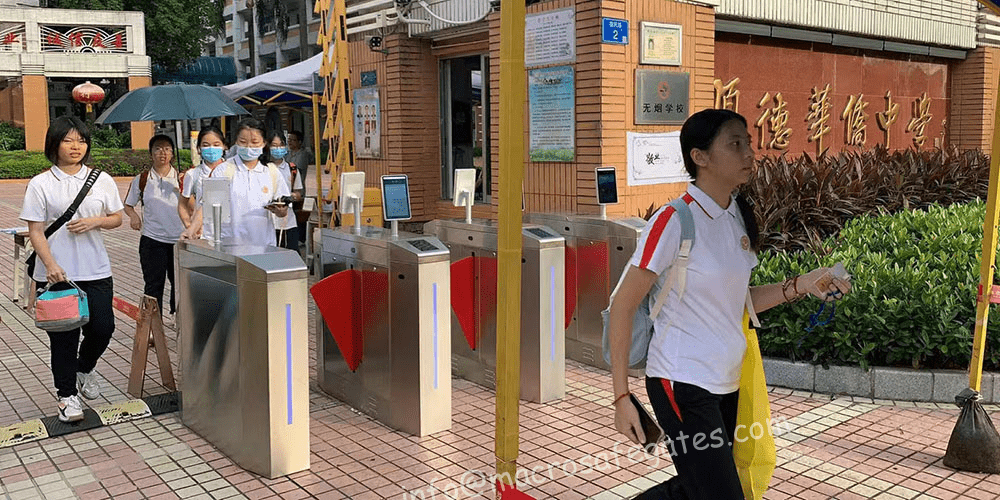 Face recognition technology is the most widely used and the most convenient to use, but its security is relatively weak.
Face recognition technology is the most widely used and the most convenient to use, but its security is relatively weak.
Face recognition is a kind of biometric identification technology based on human facial feature information. Use a camera or camera to collect images or video streams containing faces, and automatically detect and track faces in the images, and then perform a series of face-related technologies on the detected faces.
The biggest advantage of face recognition technology is that it can realize non-cooperative long-distance collection and recognition, so it has huge application prospects in the field of public security. At the same time, its collection is non-contact and the recognition speed is very fast. At the same time, face recognition has good adaptability to people. Except for the blind and black people who have certain difficulties in using it, other people generally have no problems in using it.
The main disadvantage of face recognition is its high false recognition rate and poor adaptability to the light environment. At the same time, it is difficult to recognize when there are obstacles on the face such as glasses, hats lowered to the forehead, and heavy makeup or makeup.
In terms of anti-counterfeiting performance, because the illegal acquisition of facial features is very easy and the cost of forgery is low, the security of face recognition is very low. In this regard, face liveness detection came into being. The face liveness detection task needs to determine whether the face image to be recognized captured by the face recognition system is from the real face of the person or from a certain prosthetic face (such as a printed photo, a display screen or a mask). It is one of the important guarantees for the security of the face recognition system. Liveness detection is also known as face anti-spoofing or presentation attack detection (PAD). Common presentation attacks include printing face photos, displaying faces on the screen, and 3D masks.
5.2 Fingerprint turnstile gates
Fingerprint recognition is an identification technology based on the difference in fingerprint morphology on the surface of the finger. Nowadays, fingerprint recognition is widely adopted in small mobile phones and large access control. The market has proved that this is a very safe and practical technology. The fingerprint turnstile gate has a high security level and is one of the highest-level biometric technologies, which is superior to conventional methods such as IC cards, ciphers, and keys. It is very convenient and fast to use.
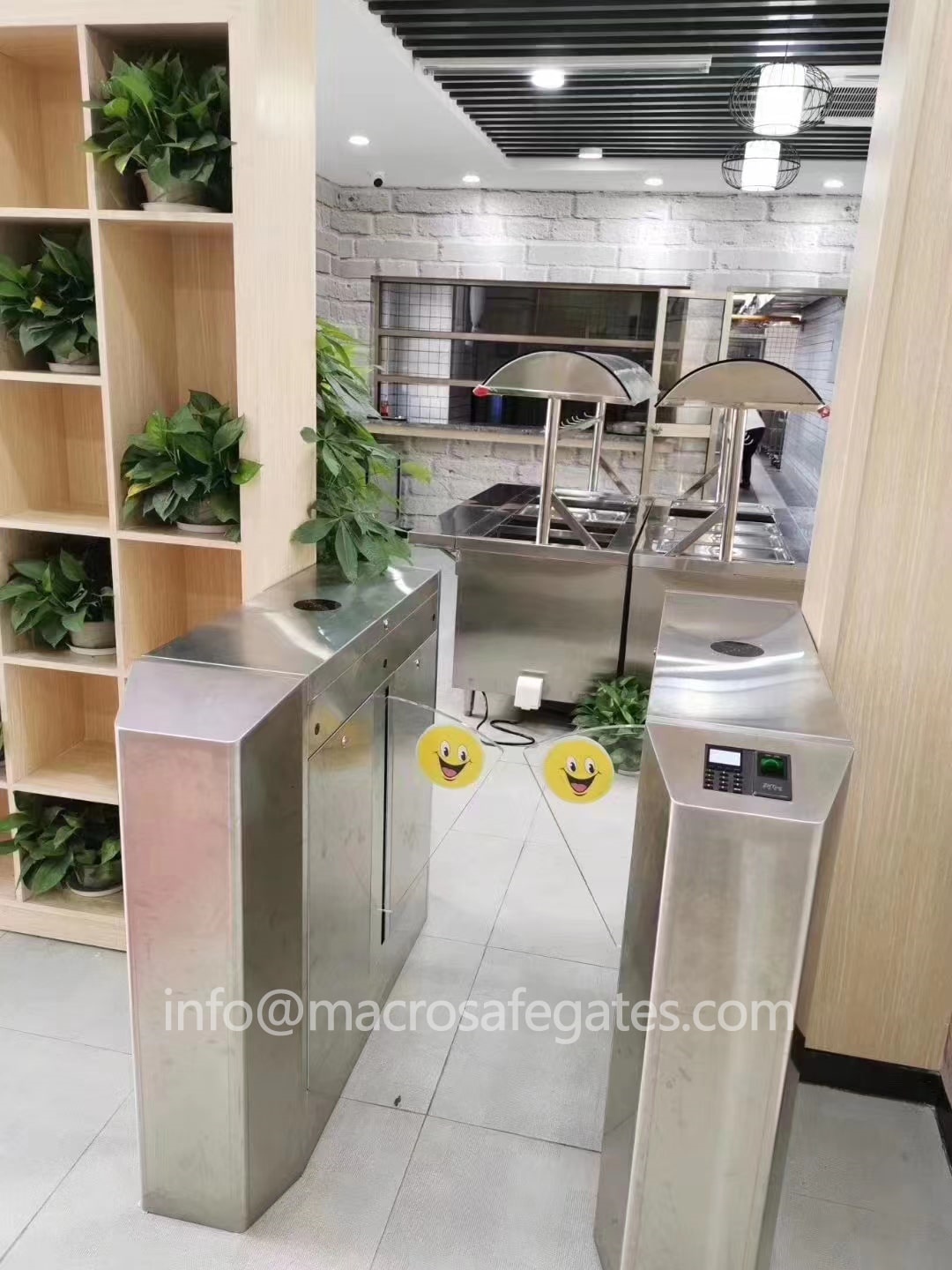
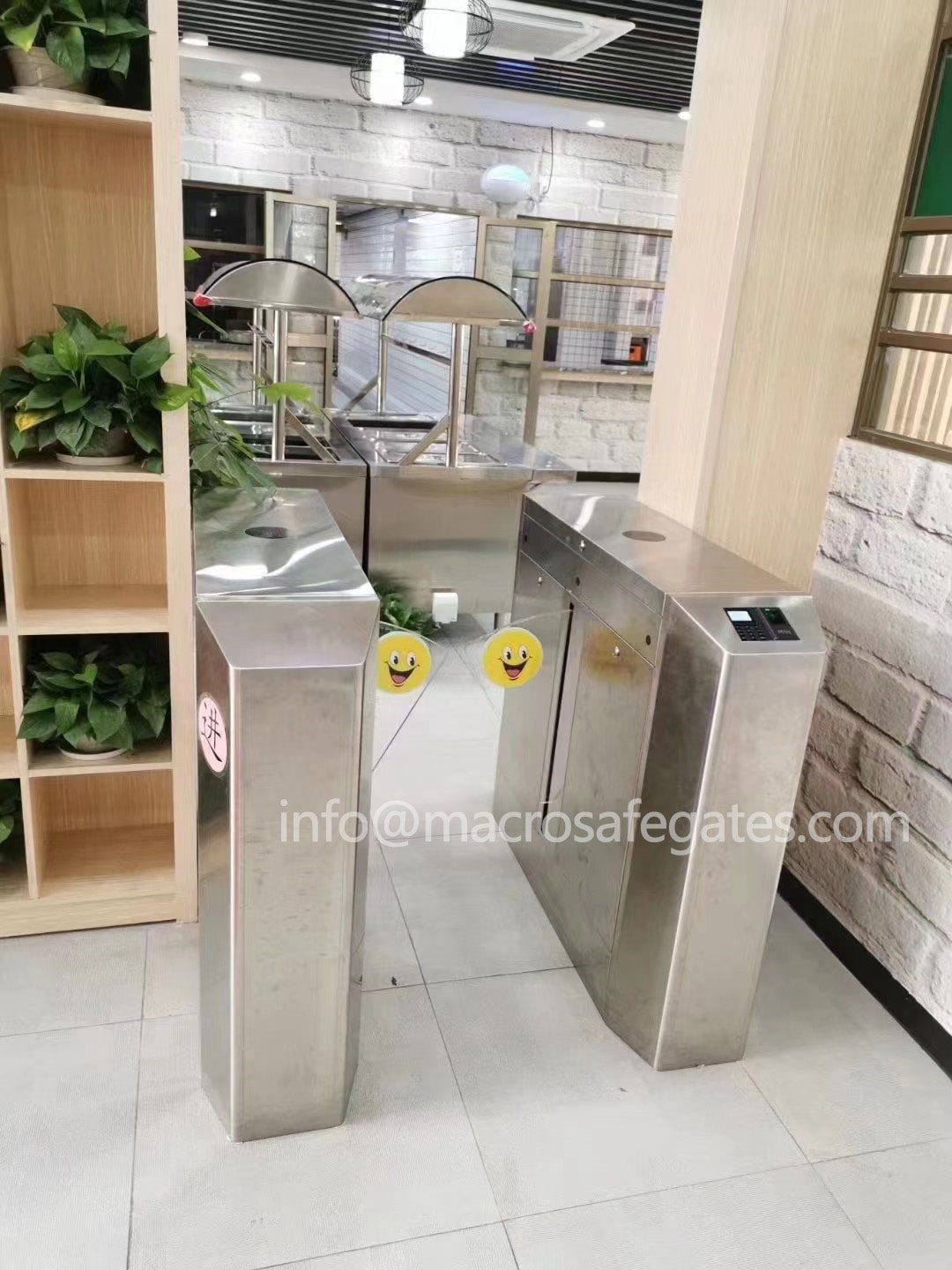 The advantage of fingerprint recognition turnstile gates is that its fingerprint recognition technology has developed early, the technology is relatively mature, and the false recognition rate and rejection rate are relatively low.
The advantage of fingerprint recognition turnstile gates is that its fingerprint recognition technology has developed early, the technology is relatively mature, and the false recognition rate and rejection rate are relatively low.
Compared with other biometric turnstiles, the price of fingerprint turnstiles is relatively low.
1. The recognition speed is fast and the application is the most convenient
2. Easy to promote, most widely used, and strong adaptability
3. Low misjudgment rate and rejection rate
4. Strong stability and reliability
5. Easy to operate, can be used without special training
6. Strong security, system scan is harmless to the body
Disadvantages of fingerprint turnstile:
1. Fingerprint recognition has high requirements on the environment, and is very sensitive to the humidity and cleanliness of fingers. Dirty, oil and water will cause it to fail to recognize or affect the result of recognition;
2. Some people or some groups have few or no fingerprints, so it is difficult to image;
3. For low-quality fingerprints such as peeling skin and scars, it is difficult to recognize and recognize the problem of low recognition rate. It is difficult to register and recognize some special groups such as manual workers with many calluses on their hands;
4. Every time a fingerprint is used, the user's fingerprint imprint will be left on the fingerprint collection head, and these fingerprint imprints may be used to copy fingerprints;
5.3 Iris recognition turnstile gates
The iris is the annular portion located between the black pupil and the white sclera, which contains many detailed features of interlaced spots, filaments, crowns, striations, crypts, etc. Once the iris is formed during fetal development, it will remain the same throughout life. These features determine the uniqueness of iris features and also determine the uniqueness of identification. Therefore, the iris feature of the eye can be used as the identification object of each person. Iris recognition is achieved by capturing iris images with a camera.
The advantage of iris recognition technology is that its adaptability to the crowd is very good, it is easy to use by almost everyone except the blind, and its false recognition rate and false rejection rate are almost the best among all biometric technologies.
At the same time, its environmental adaptability is very good, except that it cannot be used in direct sunlight and on outdoor rainy days, it can basically be used well in high and low-temperature environments.
From the perspective of anti-counterfeiting, although the iris is relatively easy to obtain illegally because the iris is rich in details and the image is very fine, it is relatively difficult to forge the iris. It is becoming easier and cheaper, so the anti-counterfeiting performance of the iris in the future will also face huge challenges.
The main disadvantage of iris recognition is that its algorithm has a large amount of calculation, so it consumes a lot of power, and it is not very suitable for battery-powered products. At the same time, its recognition speed is slow, so it is difficult to do 1:N recognition.
6. How does the biometric turnstile realize access control and attendance?
With the gradual maturity of facial recognition technology, coupled with the integration of access control systems, the technology has become widely used. For example government agencies, real estate communities, community streets, schools, shopping malls, supermarkets, construction sites, airport entrances, and other scenarios that need to be identified,
It can provide customers with personnel access management, visitor management, attendance management, and big data collection. Biometric turnstiles can effectively prevent unauthorized persons or blacklists from entering and leaving through the face recognition technology of turnstile gates.
Facial recognition is a biometric technology based on human facial feature information. Its good features that are not easy to reproduce can effectively identify the identity, including face tracking and detection, automatic adjustment of image zoom, infrared detection at night, automatic adjustment of exposure intensity, and other technologies. Face recognition has been integrated into turnstile gates, and face information can be entered quickly. Users swipe their faces to pass, and facial recognition is used as the key to open the door.
The biometric turnstile does not require any medium to open the door, so it not only eliminates the hassle of forgetting to bring a key or card but also saves a lot of money. It can solve the problem of users forgetting to bring their work cards, card theft, etc., and realize access control in multiple scenarios such as enterprises, enterprises, and residences.
7. Features of biometric turnstiles
Features of face recognition gate system: data input can enter and exit: enter personnel information into the database, internal personnel can directly enter and exit obstacles by swiping their faces, foreign tourists only need to simply register information, and then swipe their faces to enter. The intelligent face recognition access control system greatly saves the trouble of personnel entering and leaving, and manages the visitors effectively and orderly.
High accuracy: The face door adopts infrared face recognition technology, which has strong anti-interference ability and can reduce the influence of the external environment and light directions. It can accurately extract face attributes for dynamic comparison of real people and greatly reduce recognition errors.
Attendance registration: The access control system supports the records of personnel entry and exit data, which can clearly support the attendance status of personnel, without manual attendance registration, which improves attendance efficiency and avoids loopholes in traditional attendance methods.
Data interconnection: When there are multiple entrances to the same unit, multiple front turnstiles can be installed. Face turnstiles in different areas have a consistent database and terminal processing channels, so face turnstiles in all areas can complete data interconnection. Consistent processing of multiple entries.
Early warning function: The face recognition access control gate system has an early warning function, which can realize automatic blacklist warning, improve the safety and timeliness of entry and exit management of enterprises, and prevent the occurrence of crimes. The application of face recognition access control system plays an important role in the intelligent management of enterprise units. It can make up for the security loopholes in traditional card swiping access control and fingerprint recognition, help various industries solve security management problems, and facilitate management personnel to track personnel behavior-related data analysis.
8. Tips for choosing the perfect biometric turnstile for your business
As technology advances, biometric access control systems have become increasingly popular in businesses worldwide. The use of biometric turnstiles has been proven to provide a secure and accurate solution for controlling access in various environments like offices, banks, data centers, factories, hospitals, and more. But, with various options available, how do you choose the perfect biometric turnstile for your business? Here are some tips for you to consider.
1. Understand Your Business Requirements
The first step in choosing the perfect biometric turnstile is understanding the specific needs of your business. What is the purpose of the biometric turnstile? What kind of environment will it be in? What is the traffic volume per hour? Will you require 24/7 monitoring, logging, and notifications? It is essential to think about the following factors when selecting biometric turnstiles. Understanding your business requirements will help you decide which features you need, and which types of biometric turnstiles to focus on.
2. Consider the Type of Biometric Sensor
The type of biometric sensor is an important factor when choosing a turnstile. The market has three types of biometric sensors: fingerprint, facial recognition, and iris recognition. Fingerprint sensors are commonly used due to their high accuracy and reliability. Facial and iris recognition work similarly, but facial recognition tends to be less accurate in low-light settings. It’s always good to compare each sensor type's accuracy and reliability to determine which will meet your business requirements.
3. Look for Durability and Design
Since biometric turnstiles are often placed in high traffic areas, they must be durable to withstand heavy usage. Consider the materials used to construct the turnstile and its design to ensure its durability. Additionally, the design must be professional to give visitors and customers the best impression.
4. Verify Integration with Existing System
It is essential to confirm whether the biometric turnstile you plan to purchase integrates with your existing system. Most biometric turnstiles come with a web API that enables integration with a variety of systems. Check with your integration team to ensure that the turnstile works with your software.
5. Evaluate the Cost
The cost of biometric turnstiles varies depending on the type of technology, features, and design. Remember that a high price doesn't guarantee high quality, and low price doesn't mean low quality. Get multiple quotations and compare them to determine the best value for money based on your needs.
Choosing the perfect biometric turnstile requires careful consideration of your business requirements, the type of biometric sensor, durability and design, integration with existing systems, and cost. Take the time to evaluate each component, and you're sure to find the ideal turnstile for your business. A reliable and secure biometric turnstile system will provide convenience, security, and peace of mind for both you and your visitors.
Common Concerns Regarding Biometric Turnstiles and Our Solutions
1. Privacy and Security: Users may worry about the privacy and security of their biometric data, as well as the potential for unauthorized access or data breaches.
2. Accuracy and Reliability: There can be concerns about the accuracy and reliability of biometric authentication, especially in high-traffic environments or adverse weather conditions.
3. User Acceptance: Some individuals may be apprehensive about adopting biometric technology and may have concerns about the ease of use and acceptance among employees or visitors.
Solution by Macrosafe:
Privacy and Security: At Macrosafe, we prioritize the privacy and security of biometric data. Our turnstiles utilize state-of-the-art encryption methods to safeguard biometric data, and strict access controls ensure that only authorized personnel can manage and access this sensitive information. Additionally, our systems comply with the latest data protection regulations, such as GDPR, to provide peace of mind to our clients and their users.
Accuracy and Reliability: Macrosafe's commitment to accuracy and reliability is unwavering. Through continuous research and development, we employ cutting-edge sensor technologies and advanced algorithms to ensure the highest level of precision in biometric authentication. Our quality assurance processes guarantee consistent performance, even in high-traffic environments and challenging weather conditions, thereby instilling confidence in the reliability of our turnstiles.
User Acceptance: User acceptance is crucial, and at Macrosafe, we focus on delivering a seamless and intuitive experience. Our biometric turnstiles are designed with users in mind, incorporating feedback from extensive usability testing to ensure ease of use. Moreover, our comprehensive training and support programs are tailored to facilitate smooth adoption and acceptance among employees, visitors, and stakeholders.


